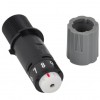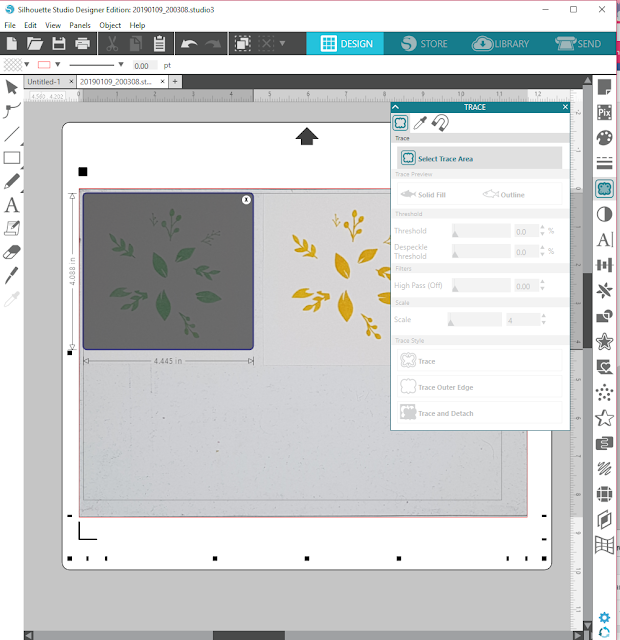Hi everyone. It's Verity here from Pretty Little Button bringing you another project. For today's post, I'm showing you how you can step up your stamping with your PixScan mat. There are a lot of fun and interesting stamps out there that more than just regular stamping. I'm exploring how we can use our Pixscan mat with turnabout stamps to create depth and dimension. Most turnabout stamps don't come with a die - you stamp, turn 90 degrees and then stamp again in a different colour. But I wanted to take it on step further and foam mount the different layers for more interest. The Pixscan made it very easy to do, so read on how you can create a card like this too!
Card storage and organiser details:
For details on how to set up your camera or phone with Pixscan (calibration), please see this post HERE. For the first layer of stamping with my turnabout stamp, I stamped this directly onto the card panel in my choose ink colour. Usually, with a turnabout stamp, you would the rotate your card panel 90 degrees and stamp directly onto the card panel in another colour. However, to step this up to give dimensional look, you need to stamp the remaining 3 layers separately on white card panels of the same size.
Position these separate layer panels on to your PixScan mat, and load this up into your design space (again, refer to post above on how to do this).
In order for you to cut out the stamps, you need to trace the images to generate a cut line. Use the trace tool draw around the area you wish to trace.
Next, select solid fill and adjust the threshold so the shapes you wish to trace turn yellow. If you turn this too high, the whole area will turn yellow. Make sure you just adjust the level until only your stamp image is yellow.
Next select trace. A red cut line will now outline you stamp images. You can either cut them out like this or add an offset around your image.
To add the offset, select the cut line and open the offset window. Adjust the offset to your choosing - I went for 0.0675 however, I do wish I went for a small offset.
Once you press enter you will now have two cut lines - the initial trace cut line and the offset cut line. Delete the trace cut line to avoid confusion when you send this to cut.
When you have traced and offset all your design on your mat, send this to cut with your machine making sure you load up you Pixscan mat without moving stamped images on the mat. Remember to do a test cut before cutting the design out.
Assembling the card:
When the machine has cut out your stamped images, do not discard the negative pieces. You need one of these to act as the turnabout template. Position one of these negatives over your initial stamp card panel, but rotate the design by 90 degrees.
Next, apply foam pads to one colour layer stamping and adhere through the negative parts of the die cut turnabout card panel. You can easily lift the negative card panel up and over the foam mounted pieces once complete.
Next, position the negative die cut turnabout panel on top of the foam mounted layer but again, rotate this 90 degrees, making sure it is centred.
Again, add next colour layer pieces through the negative pieces foam mounting these. You need to double foam mount this and for stability, you will need to add foam pads to areas where there is no raised layer to adhere to - see below.
Again, you can easily lift the negative die cut panel, up over the foam mounted pieces once complete.
Repeat this process once more rotating the negative die cut panel 90 degrees for the last colour layer. This card panel was adhered to a 5.25" x 5.25 kraft card base, and a small heat embossed sentiment was added to the middle.
Until next time,
Verity

Profile | Pretty Little Button Blog | Instagram | Facebook
PRODUCTS USED:




















That is genius!
ReplyDelete